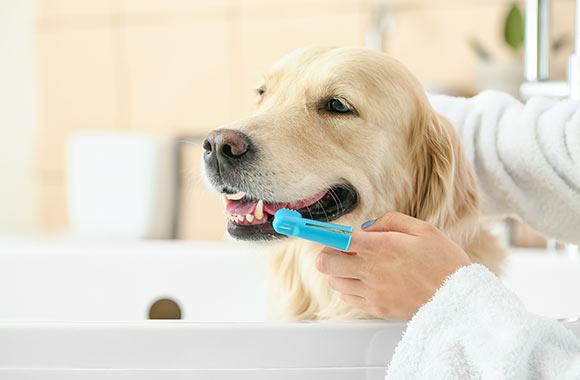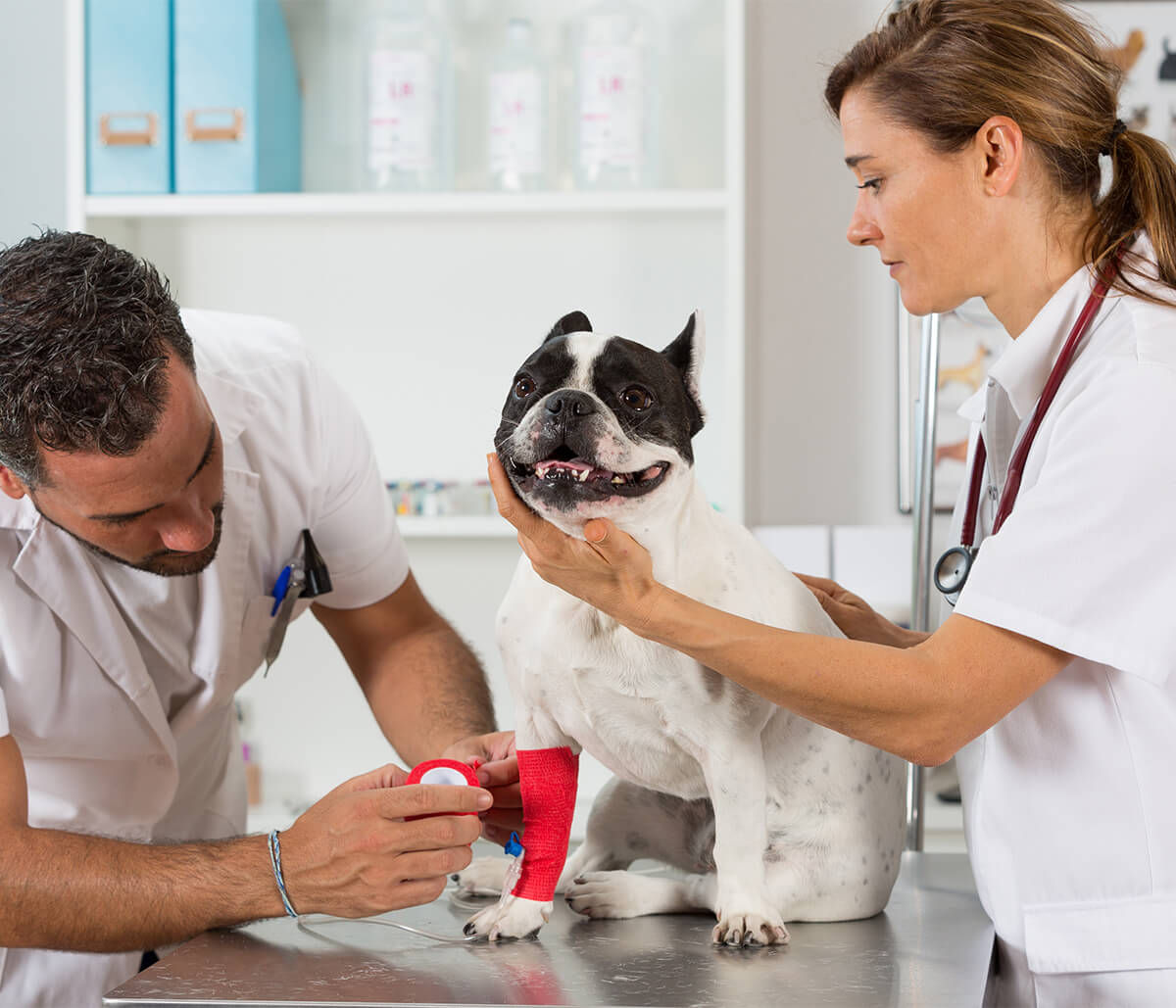
An important and often overlooked aspect of dog ownership is maintaining their oral health. It helps to look at a dog’s oral health as the gateway to their total body health.

That’s because dental problems like periodontal disease can cause infections throughout your dog’s body. Fortunately, there are plenty of effective options for keeping your dog’s oral health in excellent shape. These options include dog dental chews, regular toothbrushing and professional cleanings.
How to Clean Dog Teeth
If you’re wondering how to keep your dog’s teeth clean, the best way is through consistent brushing. While some dogs may be open to having their teeth brushed, others may be hesitant.
If your dog is reluctant to cooperate, talk to your veterinarian about how to properly brush their teeth. Be sure to ask for recommendations on dog toothbrushes and toothpaste.
How to Brush a Dog’s Teeth
It’s important to begin brushing your dog’s teeth as early as possible. The best way to clean puppy teeth is to start early and establish a routine. The sooner dogs get used to a toothbrushing routine, the better.
Find a convenient brushing time every day so it becomes part of your dog’s daily routine. Try to choose a time where you’re both relaxed and comfortable.
- Start by slowly rubbing your fingers across your dog’s mouth.
- Once they’ve gotten used to this, introduce a small amount of dog toothpaste by putting some on the tip of your finger. You can also use a piece of gauze wrapped around your finger to provide some abrasion.
- When you’ve gotten into a routine, introduce a toothbrush. Allow your dog to sniff the toothbrush and become comfortable with it before you start.
- Gently touch the toothbrush to your dog’s teeth, offering them a treat and praise afterward for positive reinforcement.
- Once your dog becomes acquainted with the toothbrush, apply the bristles to the teeth and try to brush the tooth surface to slightly below the gumline while not brushing the gums directly.
Once you’ve gotten into a routine, you’ll be on your way to helping your dog maintain good oral health and, hopefully, somewhat decent breath.
Note that you should not use human toothpaste in place of dog toothpaste under any circumstances. Human toothpaste often contains xylitol and other ingredients that are harmful to dogs.
Make sure to give your dog plenty of encouragement and praise during this process so they’ll associate toothbrushing with feelings of positivity.
Alternatives & Supplements to Brushing a Dog’s Teeth
If you’re wondering how to keep a dog’s teeth clean without brushing, there are alternatives. They can’t achieve the same level of clean as brushing, but they can be a helpful addition to brushing.
That said, while regular toothbrushing is the best option for keeping your dog’s teeth and gums healthy, there are other things you can do in addition to brushing. They include:
- Dog dental treats, which support plaque removal and fresh breath
- Dental chew toys
- Oral gel
Most veterinarians also offer complete dental cleanings under anesthesia. Some dogs never need professional teeth cleanings, while others may have difficulty keeping optimal dental health.
Before you start a new dental care routine with your dog, schedule a dental check-up and see if a cleaning is necessary. Some dog breeds are more prone to dental disease than others. According to some references, 60 percent of dental health is related to genetics/hereditary traits.
If your dog is scheduled for a dental cleaning with your veterinarian, they will be put under anesthesia. Non-anesthetic dental cleaning, often performed by groomers and others, can pose health risks to your dog.
Plus, over half of the tooth is below the gumline and can’t be viewed or examined while the dog is awake. If you’re worried about your dog being put under an anesthetic, talk it over with your veterinarian about why anesthesia is important during dental cleanings for your dog.
It’s always a good idea to reach out to your veterinarian about any oral health concerns and ask questions during your dog’s routine exams.
Importance of Dog Oral Health
If you do your due diligence, your efforts to keep your dog’s oral health in great shape are bound to pay off.
Oral health problems in dogs can lead to health problems throughout the body. Many experts believe poor oral hygiene in dogs can lead to heart issues, diabetes, kidney infections and even a broken jaw.
If you’re worried your dog has oral health issues, be on the lookout for:
- Visible plaque and tartar
- Reluctance to eat or loss of appetite
- Excessive drooling
- Bad breath
- Swollen, irritated or bleeding gums
- Loose, cracked or missing teeth
- Swelling of the face, especially under the eyes
If any of these issues arise, call your veterinarian immediately.
Helping your dog maintain their oral health is an essential way to care for your dog.



